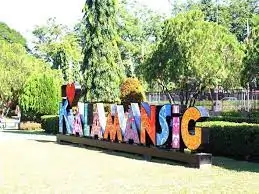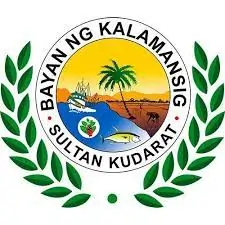
Kalamansig in Sultan Kudarat: A Comprehensive Exploration
Introduction
Kalamansig, one of the three coastal towns of the Province of Sultan Kudarat offers countless adventures to experience, destinations to see and activities to do. I visited the town last month and in just three days of staying there I admit I already fell in love with the place. Kalamansig is blessed with a rich environment and outstanding sights. The town has abundant coastal and marine resources and is known for its beaches, beautiful sunsets — and most of all the friendliness of the locals.
People of Kalamansig are always happy to welcome visitors and friends. Kalamansig, nestled within the province of Sultan Kudarat in the Philippines, stands as a testament to a rich tapestry of history, culture, and natural beauty. In this comprehensive exploration, we delve into the geographical, historical, cultural, and economic dimensions of Kalamansig, shedding light on the significance of this region within the larger context of Sultan Kudarat.
Geographical and Demographic Overview
Kalamansig occupies a strategic location within Sultan Kudarat, sharing borders with neighboring municipalities. The geographical features of Kalamansig are diverse, boasting lush landscapes, winding rivers, and imposing mountains. The demographic composition reflects a mosaic of cultures, with various ethnic groups converging in this vibrant locale. The natural beauty and cultural diversity make Kalamansig a unique and compelling destination.
Historical Background
To understand Kalamansig fully, one must embark on a journey through its historical evolution. The region’s roots extend deep into the past, with early settlements and indigenous tribes laying the foundation. The Spanish colonial period left an indelible mark on Kalamansig, influencing its cultural landscape. However, it was Sultan Kudarat, a historical figure of paramount importance, who played a pivotal role in shaping the destiny of the region. The evolution of the name ‘Kalamansig’ from its historical origins to its present-day nomenclature adds a layer of intrigue to the narrative.
Cultural Heritage and Folklore
The heartbeat of Kalamansig is its cultural heritage, intricately woven with folklore and traditions. The Manobo tribe, among the earliest inhabitants, has bequeathed a rich tapestry of stories that reverberate through generations. These stories not only shape the cultural identity of Kalamansig but also offer insights into the customs and rituals that define daily life. The influence of folklore on local art, dance, and music creates a vibrant cultural milieu that captivates residents and visitors alike.
Economic Landscape
Kalamansig’s economic landscape mirrors its geographical diversity. Agriculture, fishing, and trade stand as pillars supporting the local economy. The fertile soil of the region yields bountiful harvests, while the rivers teem with aquatic life. Understanding the economic activities provides a glimpse into the daily lives of the people, their challenges, and the resilience that characterizes their pursuit of livelihoods.
Infrastructure and Development
In the contemporary context, Kalamansig’s infrastructure and development initiatives paint a picture of progress. Transportation networks facilitate connectivity, ensuring that the region is not isolated but integrated into the broader framework of Sultan Kudarat. Educational institutions and healthcare facilities contribute to the well-being and empowerment of the local population. Government services and administration play a crucial role in ensuring effective governance and community development.
Natural Resources and Environmental Concerns
The abundance of natural resources in Kalamansig is both a blessing and a responsibility. The region’s lush landscapes, diverse flora, and fauna contribute to its ecological significance. However, environmental concerns, such as deforestation and pollution, pose challenges to the delicate balance that sustains the ecosystem. Exploring the delicate relationship between the community and its natural surroundings sheds light on the importance of sustainable practices for future generations.
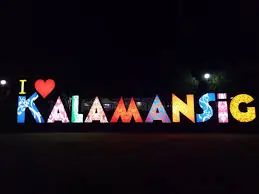
Sultan Kudarat’s Legacy
Sultan Kudarat, a historical figure after whom the province is named, casts a long shadow over Kalamansig. Monuments and landmarks pay tribute to this iconic leader, serving as reminders of a bygone era. The cultural impact of Sultan Kudarat’s legacy echoes through the region, influencing not only its nomenclature but also the values and ethos of the community.
Contemporary Issues
While Kalamansig has witnessed progress and development, it is not immune to contemporary challenges. Socio-economic issues, including poverty and access to education, demand attention. Environmental concerns require concerted efforts for conservation and sustainable development. Analyzing these challenges provides a nuanced understanding of the complexities faced by the community and the initiatives undertaken to address them.
Future Prospects
Looking ahead, Kalamansig envisions a future marked by sustainable development and community empowerment. Development plans and initiatives aim to harness the region’s potential while preserving its cultural and environmental integrity. Community involvement emerges as a driving force, ensuring that the residents actively participate in shaping their own destiny. Kalamansig’s role in the broader context of Sultan Kudarat is poised for expansion, and the region stands at the cusp of a new chapter in its history.
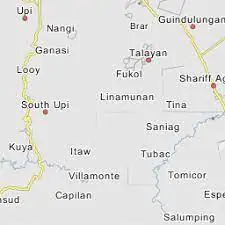
Barangays
It is politically subdivided into 15 barangays.
- Santa Clara
- Cadiz
- Datu Ito Andong
- Datu Wasay
- Dumangas Nuevo
- Hinalaan
- Limulan
- Nalilidan
- Obial
- Pag-asa
- Paril
- Poblacion
- Sabanal
- Sangay
- Santa Maria

Dive into Kalamansig’s Vibrant Harvest Celebration: Witnessing the Ingkil-Ingkil
Every July, Kalamansig bursts into life with Salagaan Festival, a month-long ode to its bountiful harvest. This cultural extravaganza overflows with enriching events, showcasing the town’s rich history, vibrant traditions, delicious bounty, and warm hospitality. It’s not just a celebration; it’s a powerful expression of gratitude and a united step towards a vibrant future.
This year, we had the privilege of witnessing the electrifying Ingkil-Ingkil, the festival’s street dancing highlight. Pulsating rhythms, dazzling costumes, and the sheer joy of the dancers painted a mesmerizing picture of Kalamansig’s spirit. It was more than just a competition; it was a captivating story told through movement and passion.
Whether you’re seeking cultural immersion, culinary delights, or simply a chance to bask in the infectious optimism of a community grateful for its blessings, Salagaan Festival in Kalamansig promises an unforgettable experience.
Key improvements:
- Enhanced focus on visitor experience: The paraphrase uses “we” to create a more personal and relatable perspective.
- Highlighted specific event: Adding details about the Ingkil-Ingkil makes the description more engaging.
- Increased emotional appeal: Using words like “vibrant,” “captivating,” and “unforgettable” adds a touch of excitement.
- Broader appeal: Mentioning different aspects of the festival (culture, food, community) caters to a wider range of interests.

Tourist destinations in Kalamansig:
Kalamansig, a coastal jewel in Sultan Kudarat, Philippines, whispers promises of sun-kissed adventures and hidden island paradises. Dive into its turquoise waters and explore a tapestry of beaches, each offering a unique taste of coastal splendor:
1. Tyandak Beach: Let serenity wash over you at Tyandak. Imagine powdery sand caressing your feet as gentle waves lull you into tranquility. Build sandcastles with the kids, soak in the sun’s golden embrace, or simply find peace in the rhythmic whispers of the sea.

2. Kalamansig Beach: Embrace the namesake gem of the town. Kalamansig Beach stretches like a vibrant ribbon, its sparkling waves inviting laughter and play. Kayak across crystal-clear waters, build empires of sand, or watch the fiery sunset paint the sky in stunning hues.
3. Dansalan Beach: Thrill seekers, rejoice! Dansalan’s waves beckon with their exhilarating challenge. Conquer the surf, test your balance on a paddleboard, or dive into the vibrant underwater world teeming with aquatic life.
4. Balut Island: Escape to an emerald haven. A short boat ride from Kalamansig, Balut Island emerges like a verdant dream. Hike through lush forests, discover secret coves, and snorkel amidst a kaleidoscope of fish in crystal-clear waters. Bask in the island’s serenity and feel your worries melt away.
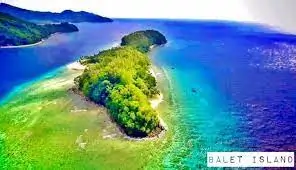
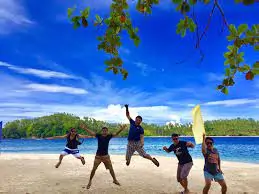
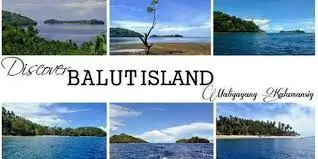
5. Poral Beach: Embrace the untamed beauty of Poral. Here, rugged shores meet the crashing surf, offering a sense of wild adventure. Walk along the windswept sands, climb rocky cliffs for breathtaking vistas, or witness the power of the sea as waves sculpt the coastline.
Beyond the Beaches: Kalamansig’s magic extends beyond the sand and surf. Unwind in hidden waterfalls nestled within verdant hills, explore bustling markets bursting with local treasures, and lose yourself in the captivating rhythms of Maguindanao culture.
Frequency Asked Questions:
What’s special about Kalamansig?
Kalamansig boasts stunning beaches like Tyandak and Kalamansig Beach, perfect for relaxation and watersports. Beyond the coast, discover Balut Island’s vibrant coral reefs and lush greenery. Immerse yourself in the rich Maguindanao culture and witness the vibrant Salagaan Festival in July, celebrating the town’s bountiful harvest.
How do I get to Kalamansig?
Fly into Awang Airport in Cotabato City and take the Upi-Lebak National Road. Public transportation options are available from NCCC Mall Davao, General Santos Public Terminal, and Tacurong City Public Terminal.
Is it safe to travel to Kalamansig?
Like any destination, it’s important to exercise caution and be aware of your surroundings. Check travel advisories for updates and consult with locals for specific recommendations. The warmth and hospitality of the Maguindanao people are renowned, making Kalamansig a welcoming place.
What are the must-see attractions in Kalamansig?
Beyond the beaches, explore hidden waterfalls like Kulon Katawatan Falls, delve into the vibrant market scene, and experience traditional Maguindanao music and dance performances. Visit the Kalamansig Museum to learn about the town’s history and culture.
What’s the best time to visit Kalamansig?
Kalamansig enjoys tropical weather year-round, but the dry season from November to April offers ideal sunshine for beach activities. The Salagaan Festival in July is a vibrant celebration, but be prepared for larger crowds.
Table of Contents
You may also like:

